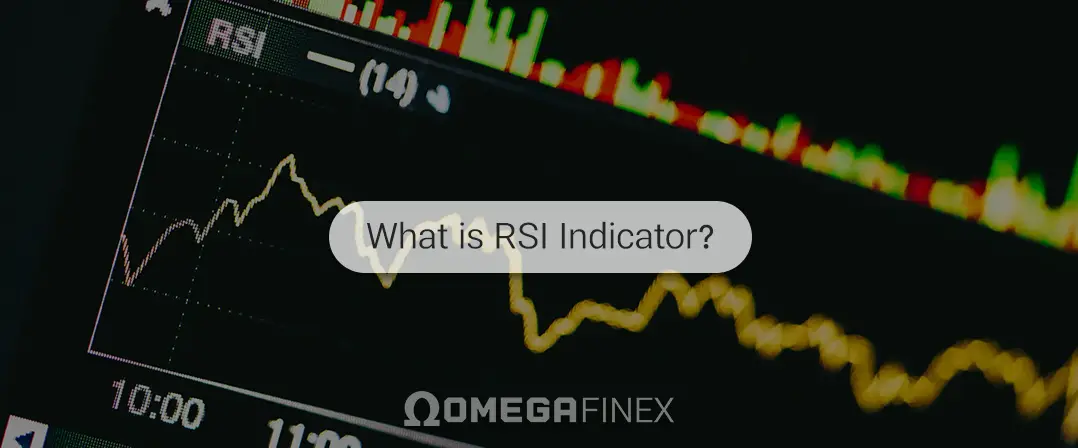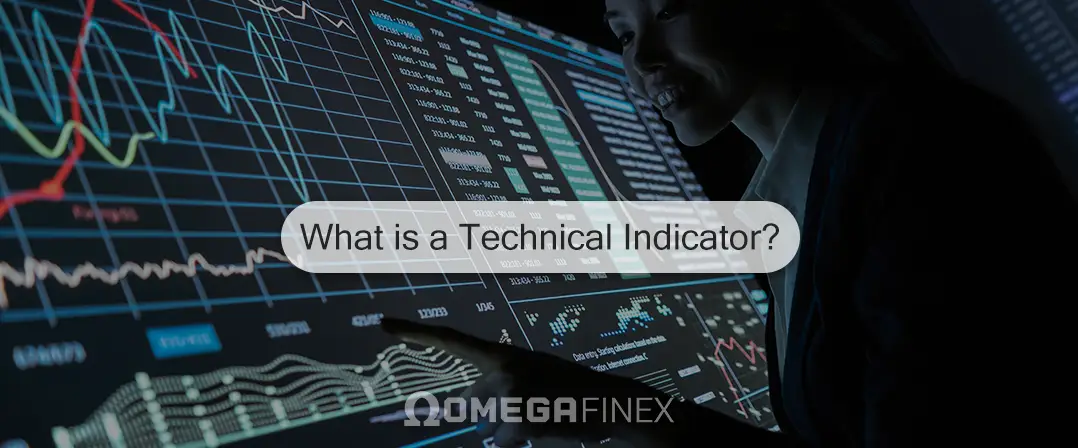
In the vast and dynamic world of financial markets and Forex trading, traders are always seeking methods and tools to gain an edge and make informed decisions. One of these powerful approaches is technical analysis, a method that has stood the test of time and remains the cornerstone of trading strategies worldwide. In this market where trillions of dollars are traded daily, understanding and effectively employing Forex technical analysis can make the difference between success and failure for traders.
This approach involves analyzing past price data, chart patterns, and various indicators to identify trends, predict future price movements, and determine potential trading opportunities. The goal of technical analysts is to examine price performance and market psychology, uncovering patterns and trends that repeat over time and allowing them to make educated guesses about future market behavior.
In this article from OmegaFinex broker, we will delve into the fascinating world of Forex technical analysis. We will explore key concepts, tools, and techniques used by traders to analyze price movements, identify trends, and execute profitable trades. Whether you’re a novice trader looking to expand your knowledge or an experienced trader seeking to improve your skills, this guide offers valuable insights and practical tips for mastering technical analysis.
What is Forex Technical Analysis?
Forex technical analysis is a method used by traders to evaluate and predict price movements in financial markets, including the foreign exchange (Forex) market. It involves analyzing past price data, chart patterns, and various technical indicators to make informed decisions in trading. Technical analysis is based on the premise that historical price movements repeat themselves and can provide insights into future price directions. Before delving into specific techniques and tools, understanding the fundamental concepts that underpin Forex technical analysis is essential:
Price Action: Price action refers to the movement of currency pairs over time and forms the foundation of technical analysis, offering valuable insights into market dynamics, trends, and potential trading opportunities.
Trends: Trends are directional price movements that persist over time. Technical analysts categorize trends as uptrends, downtrends, or sideways (range-bound) trends. Identifying and tracking trends in technical analysis is crucial for identifying potential entry and exit points.
Support and Resistance Levels: Support and resistance levels are price levels where the market tends to find buying (support) or selling (resistance) pressure. These levels are identified based on past price data and play a significant role in determining potential entry and exit points for trades.
Chart Patterns: Chart patterns are formations that appear on price charts and provide insights into market sentiments and potential price changes in the future. While numerous patterns exist, some common types include triangle patterns, head and shoulders patterns, and double bottom or top patterns.
Technical Indicators: Technical indicators are mathematical calculations applied to price data to identify trends, movements, oscillations, and other trading signals. Examples of widely used indicators in technical analysis include moving averages, Relative Strength Index (RSI), Moving Average Convergence Divergence (MACD), and Bollinger Bands.
Tools and Techniques used in Technical Analysis
Now that we’ve covered the fundamental concepts, let’s examine the tools and techniques used in technical analysis:
- Price Charts: Price charts are graphical representations of historical price data for a currency pair. The most common types of price charts used in Forex trading are line charts, bar charts, and candlestick charts. Candlestick charts are widely favored by technical analysts due to their visual clarity and their effectiveness in conveying price action patterns.
- Trend Analysis: Trend analysis involves identifying and analyzing the direction of price movement to determine the prevailing trend. Traders use trendlines, moving averages, and trend indicators such as the Average Directional Index (ADX) to identify and confirm trends. Trend analysis helps traders align their trades with the predominant market direction and increase the likelihood of success.
- Support and Resistance Analysis: Support and resistance analysis involves identifying key price levels where buying or selling pressure is likely to exist. Traders use horizontal lines, trendlines, and pivot points to mark support and resistance levels on price charts. In technical analysis, breakouts above resistance levels or below support levels can indicate potential trading opportunities.
- Chart Patterns: Chart patterns are visual formations that occur on price charts and provide insights into market psychology and potential price movements. Below, we’ll familiarize ourselves with some of the most famous patterns.
Common Chart Patterns in Forex Technical Analysis
There are numerous chart patterns in technical analysis, but below, we’ll review the most common ones:
- Head and Shoulders Pattern: A reversal pattern identified by three peaks, with the middle peak (head) higher than the other two (shoulders). This pattern in technical analysis indicates a potential reversal from an uptrend to a downtrend, and vice versa.
- Double Top and Bottom Pattern: Reversal patterns characterized by two peaks (tops) or troughs (bottoms) with similar heights, separated by a temporary reversal. They signal a potential reversal of the prevailing trend.
- Triangle Pattern: Continuation patterns formed by converging trendlines, indicating a consolidation period before the continuation of the prevailing trend. Depending on the slope of the trendlines, triangles can be symmetrical, ascending, or descending.
Common Technical Indicators
Indicators are mathematical calculations applied to price data to generate trading signals and identify potential entry and exit points. Some of the most widely used and popular indicators in Forex technical analysis include:
Moving Averages: Moving averages smooth out price data and help identify trends by averaging fluctuations. Common types of moving averages include Simple Moving Average (SMA), Exponential Moving Average (EMA), and Weighted Moving Average (WMA).
Relative Strength Index (RSI): RSI is a momentum oscillator that measures the speed and change of price movements. It oscillates between 0 and 100 and is used to identify overbought and oversold conditions in the market.
Moving Average Convergence Divergence (MACD): MACD is a trend-following technical analysis indicator composed of two lines – the MACD line and the signal line. Traders use MACD crossovers and divergences to identify changes in trend momentum.
Bollinger Bands: Bollinger Bands consist of a middle band (usually a 20-period moving average) and two outer bands that represent standard deviations from the middle band. Bollinger Bands help identify overbought and oversold conditions and gauge market volatility in technical analysis.
Practical Tips for Implementing Forex Technical Analysis
Forex technical analysis is a powerful tool for Forex traders to analyze price movements, identify trends, and make informed trading decisions. Remember to practice patience, discipline, and risk management, and continuously strive to improve your technical analysis skills to become a successful Forex trader. Here are some important tips and suggestions for using the technical approach:
- Use Multiple Timeframes: Analyzing multiple timeframes allows traders to gain a comprehensive view of the market and identify high-probability trading opportunities. Start by analyzing higher timeframes (such as daily or weekly charts) to identify the prevailing trend, then move to lower timeframes (like hourly or 15-minute charts) for precise entry and exit points.
- Combine Different Tools: Combining multiple tools and indicators in Forex technical analysis can confirm and validate trading signals. For example, use trendlines and moving averages to confirm the trend direction and momentum oscillators like RSI or MACD to confirm overbought or oversold conditions.
- Practice Risk Management: Implementing appropriate risk management techniques to preserve capital and minimize losses is crucial. Use stop-loss orders to limit potential losses and adhere to the risk-to-reward ratio to ensure that potential profits outweigh potential losses in each trade.
- Stay Informed: Stay informed about economic events, central bank announcements, geopolitical developments, and other factors that may impact currency prices. Economic calendars and news feeds can provide valuable insights into market sentiment and potential market-moving events.
- Keep Learning: The Forex market is dynamic and constantly evolving, so continuous learning and skill development are essential for success. Explore new technical analysis tools, experiment with different strategies, and learn from successes and failures to refine your trading approach over time.
Conclusion
Forex technical analysis is a vital tool in the arsenal of every Forex trader. By leveraging past price data, chart patterns, and technical indicators, traders can gain valuable insights into market dynamics, trends, and potential trading opportunities. Whether you’re a short-term scalper or a long-term trend follower, technical analysis can help you navigate the complexities of the Forex market with confidence and precision.
However, mastering technical analysis requires dedication, patience, and continuous learning. As you embark on your journey to become a skilled technical analyst, remember to practice discipline, risk management, and emotional control. Experiment with different strategies, refine your skills, and stay informed about market developments to stay ahead of the curve.
Ultimately, technical analysis is not a crystal ball that predicts the future with certainty; rather, it is a powerful tool that provides valuable insights and probabilities. By integrating the technical approach into your trading strategy and combining it with fundamental analysis and sound risk management principles, you can enhance your trading performance and increase your chances of success in the challenging and rewarding world of Forex trading.





